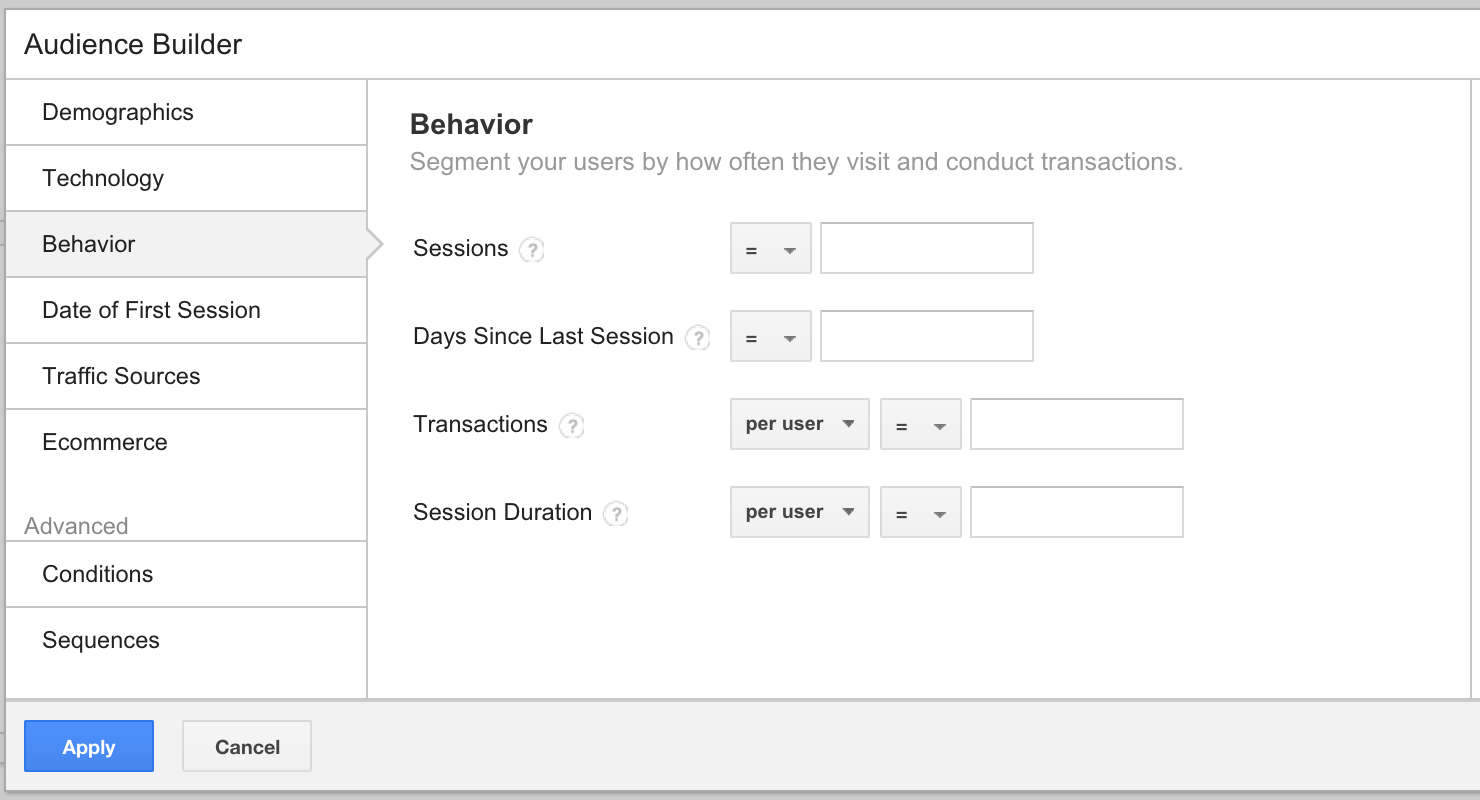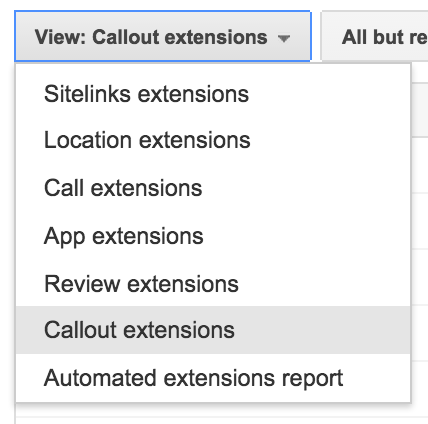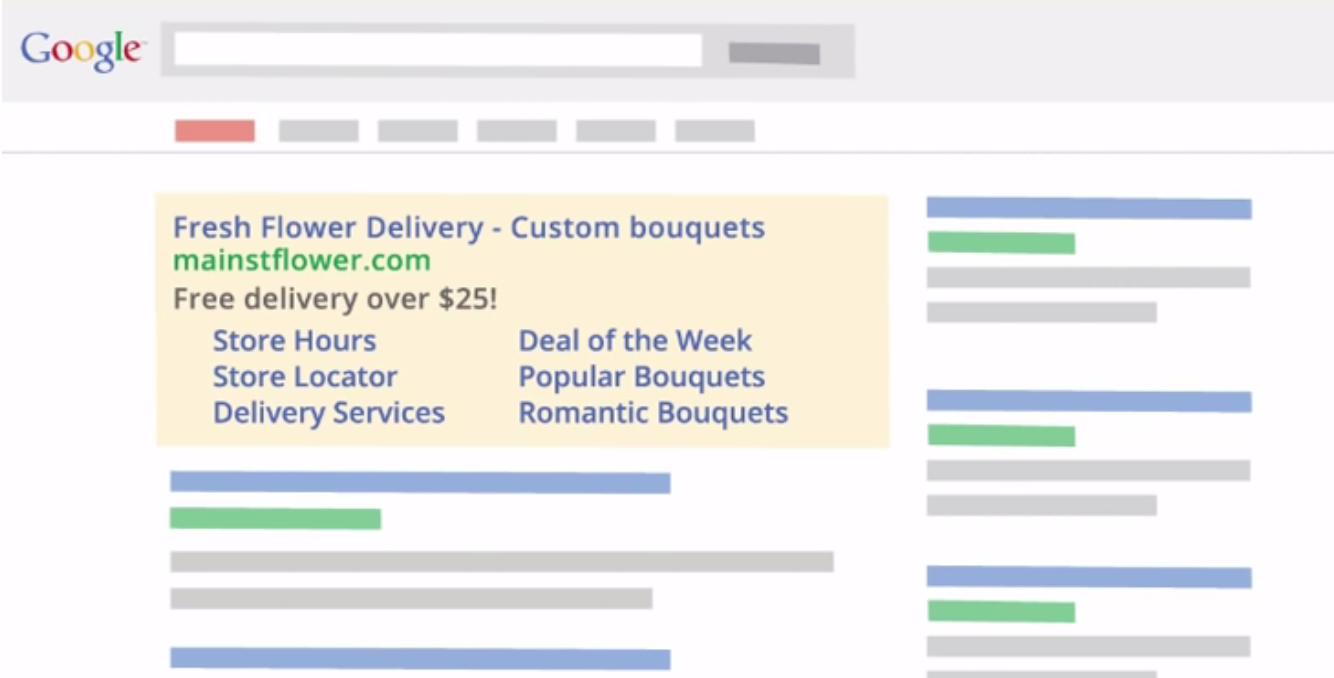Does your business use paid search for its B2C lead generation? Online lead generation using paid search options like Google Adwords can be a tricky business. Getting a website visitor interested enough to click on your ad and then fill out a form on your website requires a highly-strategized paid search campaign.
Below, you will find seven strategies to optimize B2C lead generation accounts—strategies which will help your business capture qualified, quality leads.
If you’re running search advertising to collect leads, these tips will help take you to the next level.
1. Apply RLSAs to Your Campaigns
Is your business using RSLAs? Remarketing Lists for Search Ads (RLSA) is a powerful feature which uses your website’ remarketing lists to effectively drive leads to your website. Using RLSA bid adjustments allows you to tell Google you are willing to pay some percentage more for the click of a former site visitor.
Here’s how you can get started with RSLAs.
Get Started With This RSLA Strategy
Start your RSLA campaign by going broad. First, build an audience of all site visitors that have not converted. Then, apply this to some of your high-traffic ad groups with a bid adjustment of +15%. Typically, you’ll clearly see the increased conversion rate and lower cost per lead in this audience. If you’re finding success, test this out across your whole account.
If you have low site traffic, try setting the duration of your remarketing window to more than 90 days. And remember, set your ad group’s Flexible Reach setting for Interests and Audiences to “Bid Only” to still allow your ads to serve to both former visitors and new visitors.
Advanced RSLA Strategy

A more advanced strategy using RSLAs involves creating different audiences based on the type of site content those particular audiences viewed. Then apply these audiences, with bid adjustments, to the applicable ad groups or campaigns targeting those segments.
Let’s look at this from the perspective of a B2C business in a real world example.
Let’s say you are a tax preparation business looking to generate leads for individuals who need to prepare and file individual income tax returns. Here’s how you could use an advanced RSLA strategy to reach new customers:
First, you create an audience from anyone visiting your personal tax services pages and target those people in your personal tax services campaigns. Next, you follow the same steps for your business tax services pages visitors. Now, exclude or bid adjust down on those visitors of your business page from your personal page targeting so you aren’t paying for the wrong audience.
Up Your Game With Behavioral Elements
In the past, you could only use audiences built-in AdWords for RLSAs. Now, you are able to use Google Analytics lists for search retargeting as well. This feature allows you to create audiences based on behavioral elements – ones which were not available using only the Google remarketing tools.
Find the right opportunity for remarketing based on the behavior of your site visitors and the type of leads you’re looking for. You might want to create an RLSA audience from a list of visitors that spent a certain amount of time on a particular page, or build an audience from individuals that arrived on your website from a certain referrer.
Additionally, you’re probably going to want to bid adjust higher on an RLSA audience of website visitors who started to fill out a quote form but abandoned your site without submitting that form, or individuals who got to your video page but only watched the first 30 seconds.
2. Test an RLSA-Only Competitor Campaign
Now that you understand the basics of RSLAs, let’s look at an effective B2C lead generation strategy to reach website visitors who left your site to search for your competitors’ businesses. While running ads on competitor terms can ruffle a few feathers and start a nasty string of CPC hikes for everyone involved, there is a solution to regain some of those potential leads without taking it down that road.
The solution — an RLSA-Only Competitor Campaign.
Implementing Your RLSA-Only Competitor Campaign
To start, think of those businesses competing against you for the different segments of your business offerings, and then create groups or campaigns around these segments with keywords that include a variation on your competitors’ business or product names. You are going to attempt to re-capture those leads that came to your site, left, and are looking for info on your competition.
Next, create an audience of all your site visitors and think about your average sales cycle length for the audience window. Depending on your business, you may not want to bid for individuals who visited the site more than 30 days ago. Other businesses may want to consider excluding anyone who has visited in the past week while targeting everyone else. Think about the behavior of these audiences differently because they are performing a search for your competitors’ term, so you already know their intent is to find that business rather than yours.
You don’t necessarily need to create super-granular audiences around website pages they viewed, or the site content that matches the offerings of your competitor in each category. Instead, the fact that the user has been to your site at all and then is searching for one of your competitors should provide an effective filter for your campaign.
Unlike the RLSA bid modifications used in the first strategy, you want to set your flexible reach to “Target and Bid” on these audiences you’ve built. Remember, you are only going to bid on the brand terms if the searcher fits into the audiences you’ve assigned to each ad group.
Utilize Removal-Related Keywords
After implementing and testing your initial RLSA-Only Competitor campaign(s), you can expand out your keywords to include any removal-related terms (e.g., “unsubscribe” or “cancel”) paired with your competitor’s name. This strategy could deliver your next new customer – a lead who knows about your business because they’ve been to your site, but who also is ready to move on from their current product or service provided by one of your competitors.
Volume on this type of lead generation campaign may be low. It will, however, make a nice companion to your brand and generic campaigns. Your RLSA-Only Competitor campaign might also have a low CTR and a lower to middling conversion rate.
But remember, those leads are out there, and they know your name. Perhaps, they just needed a reminder about your products or services. This lead generation strategy will deliver that reminder.
3. Use Strong Query-Based Campaign Structure

Solid campaign structure is key to your lead generation campaign performance.
Always construct your campaigns and ad groups around what your customers are actually searching for online. You can do this by breaking out terms into categories based on phrasing. In other words, you should split every “phrase” category out into ad groups – on top of the normal campaign segment categorizing – based on your website and service/product offerings and by match type.
Following this query-based campaign structure allows you to drill down to a more granular level and to deliver ads with messaging that matches what your prospective customers are searching for online.
Let’s apply this once again to our B2C tax preparation business example. People looking for general “tax preparation” should see different ads than those individuals searching for “1040 tax preparation.” Individuals searching for “personal tax services” should see different ads than someone searching for “reviews of personal tax services.” And again, potential customers looking for “online tax preparation” should see a different ad than someone searching for “promo code for online tax preparation.”
Why Split Out Phrase Categories?
Why do you need these different phrase segments? They are useful because all of your keyword types can now be controlled by bid and targeting separately depending on the varied performance of this more granular level strategy. A second reason involves delivering more effective ad copy to searchers.
By following this query-based campaign structure, you can tailor the ad copy, ad extensions, and the landing page experience to the query and the intent of those particular phrases. Obviously, you will include the searcher’s main phrase keywords in the ad copy, but you can now form a deeper connection with the searcher by discussing price in the ad copy, or showing them the sitelink for reviews and testimonials.
In other words, your lead generating search ads will deliver exactly what those individuals were searching for online.
Observing what your site visitors are sharing with you is the most powerful way to build a strong lead generation structure. Use the information your visitors give you – the terms and phrases they used to find and click on your ad. When you do this at a granular level, you will have complete control over the intent and queries that provide the most quality leads at the lowest cost.
Moving From Broad to Exact
Beyond breaking terms out by phrasing-type, you always want to use match-type siloing. Create duplicate versions of your ad groups, or campaigns, with each containing a single match-type version of the keywords. Negate the Exact versions of the keywords from the ad groups where their Broad keyword versions live. This will silo all Exact versions of the terms towards the Exact campaign, and the Broad campaign will solely capture the variant or long-tail versions of those terms.
Now, with your strong match-type siloed campaigns created, you simply comb through your Broad or Phrase campaigns for query opportunities to be built out into the Exact campaigns. Think of this as a mining opportunity to build new ad groups based on what’s working now, or on what’s taking a lot of impressions or spend and needs to be more tightly controlled to deliver higher ROI.
Work to expand and break out your keywords, ad groups, campaigns, and landing pages to match the searches that are actually performed by quality leads. When you do this, you are on your way to a highly effective account structure.
To review: focus on building a strong account structure. To do this, go from broad to narrow, pick out winners, and build new ad groups around those winners. Then, tailor your ad copy to share what your searchers want to know. Remember, you can do this because they told you exactly what they want when they searched for it.
4. Tailored Landing Page Experiences
Slight variations to your landing pages can make a big difference when it comes to converting website visitors into leads. Many times, improving conversion rates is just a matter of changing the above-the-fold message to match the ad copy or by using different imagery on the top of the page.
If your ads send people directly to a form, make sure the landing page is user-friendly and optimized for mobile devices. Your form’s title and call to action can also vary based on the intent of the search performed. For a price quote form, for example, you can have variations of your form’s submit button to say “Get Quote,” vs. “See Pricing”, depending on what the lead searched for.
To illustrate this, let’s look back, once again, at our tax business lead generation example.
Someone searches for “California state tax preparation” which triggers an ad in that California ad group, and then the potential customer clicks through to your site. When that individual gets to your website, your landing page copy should focus on your expertise in California state income tax preparation. You should also reinforce that messaging with related imagery.
If those website visitors searched for reviews of your service, then you should show testimonials above the fold on the landing page. If they are searching for pricing, show them pricing. If they are searching for competitor terms, show them your service and price comparison chart.
In other words, help convert those leads by immediately showing them what they’re asking to see when they land on your business’ website. Landing pages based on queries is an easy way to help your leads know they’ve come to the right place.
5. Always Take a Quality-Based Approach
Focusing on quality over quantity is a lead generation strategy which will deliver higher lead conversion rates for your business. Quality is better than quantity. In order to see the big picture of what quality leads look like, you must look at your deeper funnel results.
If you see that only 10% of your leads are potential customers looking for the products/services you offer, then you are wasting a lot of money on lead generation. To improve conversion rates, choose a deeper goal – Quality Leads – and optimize towards those leads.
Queries Which Drive Quality Leads
Start by tracking data at the keyword level and determining which queries drive quality leads. What you’ll often find is that many terms contribute to both quality and non-quality leads. A deeper analysis will show you what percent of these leads are actually good, quality leads that become won deals. Once you have that number, use it as a guide for your bidding. You can also use it for pausing or enabling keywords.
As you optimize towards this new goal of won deals from paid search, watch as the Quality Lead rate rises. Remember, your cost per lead should be taken as part of the overall goal, and start to consider the Cost per Quality Lead. You may be surprised at the differences in terms of ad groups, or even channels, that have the most efficient cost per quality lead as it might not correspond with general CPL.
Using Labels in AdWords to identify those keywords that are contributors of Quality Leads and then using an automated bidding rule for these terms is a simple strategy to help your B2C business begin to take a bigger picture view and focus effort towards this new, deeper goal. Or, as part of a large portfolio CPA bidding strategy in a bidding software tool, you could add in position-based override on these particular terms to see similar results.
6. Put Your Extensions to Work

Google Adwords offers an array of useful extensions which, when paired with the strategies above, will improve your B2C lead generation results. The best advice we can give you when it comes to these extensions is simple – use them. Use all the extensions that make sense to your business model and lead generation strategies. (Obviously, if you don’t have a physical location and don’t want leads dropping into your office to say hello, then don’t use the Location extension).
Start with Sitelinks
Let’s start with Sitelinks. It is important that your B2C business uses powerful sitelinks. For each impression, Google Adwords gives you the option to show up to four additional “mini-ads” (sitelinks) below your main ad. Put these mini-ads to work and give your leads the information they’re looking for from their searches.
Some examples on how to use sitelinks effectively would be to give searchers the options to visit pages to see customer reviews, read FAQs, or download a white paper or case study. And remember to always use the extra two description lines of your sitelinks.
Think of it as free space for you to write more copy.
Implementing Other Extensions

Use the Callout extensions to highlight your B2C business’ key value propositions and differentiators. If you are able to take phone leads, use the call extension.
Don’t forget about the Review extension. This is particularly useful for those leads that are in research mode and could be nudged into action by seeing a complementary blurb from a trusted website. Finally, take advantage of the seller rating extension so your seller rating stars show up automatically with your ads. Your business must be set up with a third-party review site and have at least 30 reviews to use this extension.
Now, in line with your smart structure, you should coordinate the use of your extensions. Tailor the callouts and sitelinks to the campaigns or ad groups, matching the segment of your business that they are looking for with the message matching the audience that you are targeting for each ad. This can also be true for the review extension (e.g. Use a review from the Business Journal for your business tax campaigns or use one from Consumer Reports for your personal tax campaigns.)
7. Don’t Forget about Bing
Bing Ads is commonly seen as AdWords’ annoying and forgotten younger brother. But don’t fall into that trap. Bing Ads is an underestimated, important tool that your B2C business should use for lead generation marketing.
Start using Bing by importing your Performance campaigns from Google. Keep in mind, though, that Bing often performs differently than Google. Because of this, you want to work the bids and Search Query Reports (SQRs) separately on each platform.
There are other differences between these two channels, as well. Currently, Bing does not have a retargeting capability, so RLSA lead generation strategies aren’t an option. You’ll also notice that Bing ad extensions are more limited than Google ad extensions.
However, with generally lower CPCs, higher CTR, and less competition, it is quite possible to optimize your Bing campaign to give you a lower Cost per Quality Lead and a substantial volume of those leads. For those two reasons alone, your B2C lead generation strategy should always include Bing as a complementary tool to Google AdWords. Bing’s capabilities are improving, so start using their automated rules, and look for remarketing coming soon.
Now your business has seven new strategies to optimize B2C lead generation accounts and improve its lead generation using paid search. If you have any further questions or need assistance driving qualified, quality leads to your B2C business, do not hesitate to contact us here at Unique Influence.
This post was written in collaboration with Jake Scudder, a Digital Marketing Strategist at Unique Influence.
Image Credits
Featured Image: Robert Kneschke/Shutterstock
Google ad extensions screenshot taken September 2015 from YouTube
All other screenshots taken September 2015 of google.com/adwords





